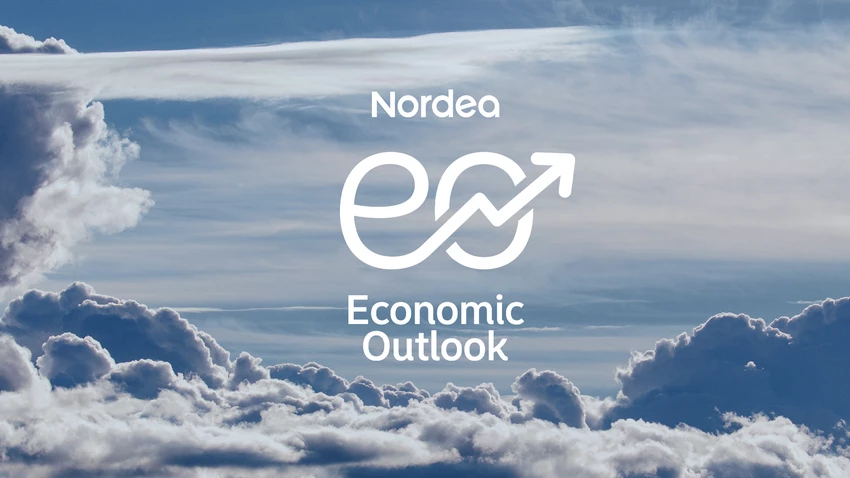
- Name:
- Helge J. Pedersen
- Title:
- Nordea Group Chief Economist
Denne siden findes ikke på norsk
Bli værende på denne siden | Fortsett til en lignende side på norskHelge J Pedersen
The global economy is subject to great uncertainty owing to President Trump’s tariff war with the rest of the world. We do not expect a global recession in our baseline scenario, and we believe that Europe, and in particular the Nordic region, is well positioned to weather the storm. The monetary policy easing cycle is coming to a close and the growth outlook is becoming more balanced between the US and Europe. This could weaken the USD in the global FX market.

Our economic spring forecast is characterised by very high uncertainty as a result of the unpredictable Trump administration – not least its chaotic trade policy.
It remains unclear what tariffs the US will impose on imports from other countries. The tariffs announced on 2 April, the so-called “Liberation Day,” were quickly reduced for most countries – except for China – to a low rate of 10% for a period of 90 days. The reason cited was that the 90-day pause would allow time to negotiate new and fairer trade agreements between the US and individual countries.
Meanwhile, the current uncertainty could make companies and investors adopt a "wait-and-see" stance, just as it cannot be ruled out that the uncertain economic environment could make households in-crease their savings. Consequently, economic activity will be lower than we would otherwise have seen.
Our baseline scenario is based on the assumption that the US will actually negotiate agreements with most countries and that general US import tariffs will be around 10% going forward – although somewhat higher for China. This assumption is supported by the trade deal struck between the US and the UK and the negotiations initiated between the US and China, which have also for a 90-day period sharply reduced tariffs between the two superpowers.
In this scenario, the global economy will avoid a deep recession and inflation will remain relatively stable. However, inflation will rise somewhat in the US in the coming year as a result of the higher tariffs.
Against this background, we have revised down our estimate for the global economy to just under 3% this year and in 2026. We have in particular significantly lowered our forecasts for the US, but on the other hand raised our growth forecast for Europe compared to the January forecast.
We expect the Chinese authorities to stimulate domestic demand through a more expansionary economic policy if necessary, and significant changes are underway in Europe. Particularly noteworthy is the European Commission’s decision to create fiscal headroom of up to EUR 800bn for new defence spending – as well as Germany scrapping its debt brake and setting up an EUR 500bn infrastructure fund under the new Federal Chancellor Friedrich Merz from the CDU. Initiatives like these could wholly or partially offset the adverse consequences of the trade war.
The Nordic countries are well-positioned to weather any potential storm that may hit the global economy.
Europe would also be the main economic winner of a potential ceasefire – or even a peace agreement – in the war between Russia and Ukraine. In addition to the extensive reconstruction needs, estimated at around EUR 500bn and potentially leading to substantial orders for European companies, an agreement could boost the low consumer confidence in many countries.
Uncertainty has also spread to the financial markets. Although the sharp fluctuations observed in early April appear to have subsided, it would not take much for them to flare up again. In our relatively mild baseline scenario, however, we do not expect fluctuations to become so pronounced as to necessitate coordinated monetary policy interventions.
We expect that the ECB will only cut rates once more – to 2% – over the forecast horizon, while the Fed will keep interest rates unchanged at current levels, despite President Trump’s strong pressure on Fed Chair Jerome Powell to cut rates now.
The substantial public debt in both the US and Europe – and the significant financing needs – will keep long-term interest rates at a relatively high level. At the same time, uncertainty about the US policy stance could lead to further weakening of the USD. However, we do not expect the status of the USD as the global reserve currency to be seriously challenged during the forecast period.
The economic outlook for the Nordic countries is, of course, also very uncertain.
However, in our view, the Nordic countries are well-positioned to weather the potential storm that may hit the global economy. This is mainly because these countries – except for Finland – have solid public finances and large surpluses on their ex-ternal balances. Moreover, as small, open economies, the Nordic countries are used to navigating uncertain times, also when it comes to foreign trade.
This will also be the case during Trump’s turbulent term in office. And although the US has become more important for Nordic countries’ foreign trade in recent years, exports to the US still only account for a small share of their overall economic activity.
However, it must once again be stressed that uncertainty is rife – and our forecast may be too optimistic if domestic demand declines to a level that cannot offset the expected slowdown in exports.
This article first appeared in the Nordea Economic Outlook: Weathering the storm, published on 21 May 2025. Read more from the latest Nordea Economic Outlook.


Stay ahead of the curve with our expert economic insights and forecasts. Get the latest analysis on global and Nordic markets delivered straight to your inbox.
Read more
Sustainability
Amid geopolitical tensions and fractured global cooperation, Nordic companies are not retreating from their climate ambitions. Our Equities ESG Research team’s annual review shows stronger commitments and measurable progress on emissions reductions.
Read more
Sector insights
As Europe shifts towards strategic autonomy in critical resources, Nordic companies are uniquely positioned to lead. Learn how Nordic companies stand to gain in this new era of managed openness and resource security.
Read more
Open banking
The financial industry is right now in the middle of a paradigm shift as real-time payments become the norm rather than the exception. At the heart of this transformation are banking APIs (application programming interfaces) that enable instant, secure and programmable money movement.
Read more